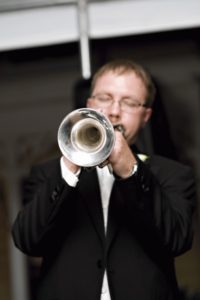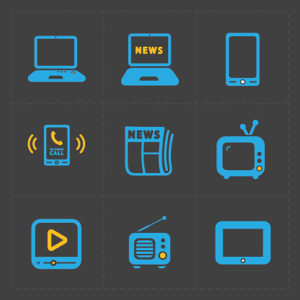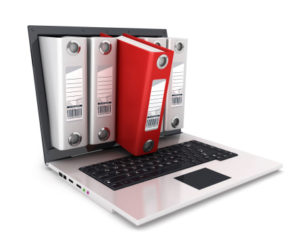
Richard Montgomery High School in Rockville, Maryland
Reprinted with permission from National Association for Music Education (NAfME). The original article published on February 17, 2016 can be found here.
We can integrate technology use into performance ensemble instruction in multiple ways. An effective strategy in this setting is to incorporate streaming multimedia content (video and sound) in our rehearsals. This could include activities that demonstrate specific musical skills and provide model performance examples. While the idea of presenting media examples in the classroom is not new (e.g. DVD or video tapes “movie days,” or even the ancient film strip), the cost and storage of this media has limitations.
The sheer volume of content and enhanced access to it online eliminates these limitations and makes it an enhanced and adaptable instructional tool. The ability to access large amounts of content instantly and easily, allows us to incorporate it seamlessly into instruction, providing many new expert points of view.
Additionally, the use of this content helps us expose our students to tons of musical models, demonstrations, and fine performance examples previously unattainable in the regular classroom.

THE MEDIA PLAYER MASTERCLASS
The media player masterclass is the use of multimedia content in a rehearsal (or other performance-based lesson) that reinforces or enhances the instructional/performance goals for that rehearsal. The amount of content used can depend on the lesson and what is being taught.
You could introduce the media content as part of the lesson’s introduction, discuss and perform the concept(s) with students, and then finally incorporate it into the performance preparation of the current ensemble literature.
By using the media content in this manner, you also break up the direct nature of the rehearsal setting, where the director mainly facilitates instruction.
GATHERING AND ORGANIZING CONTENT
The main challenge to using this content effectively is to find applicable high quality content on the web, and organize it as part of the lesson. This can be done several ways depending on what your instructional objectives are and what your teaching style is.
Additionally, it is important to use your professional and musical expertise and judgment to filter the content. As we have all seen via social media, the web is filled with substandard content that while sometimes humorous, does not have a place in the classroom.

SKILL DEMONSTRATION
Online content can be an excellent source of good skill modeling. Breathing or bowing techniques demonstrated by professional players can be solid foundations for skill building. It is important that as the expert in the room, you also provide the necessary student feedback to accompany the model. Specific skill videos require a bit more searching (e.g. how to double tongue).
The Army Field Band website contains video instrumental clinics exploring skills for band instruments (as well as voice and jazz). PBS Learning Media is an educational site that contains various types of media for all subject areas, but it also contains a large collection of instructional musical videos previously released on public television.
STYLE DEMONSTRATION
Even the most creative and clear descriptions of musical concepts can be confusing for students. Using multimedia to reinforce these descriptions can be a helpful tool. For instance, this Youtube video of the great jazz trumpeter, Clark Terry, describing jazz articulation (about 25:07 into the video), provides a primary source description of the specific instrument skill and jazz style needed to execute the proper performance of the skill.
The only comparable way of providing a resource like this for students is with an in-person masterclass or a previously released DVD. In this case, we sadly had lost Mr. Terry last year, and this content is not available in other formats. Additionally, pairing this excerpt with other applicable recordings or videos makes it an even stronger presentation tool in the lesson.
PERFORMANCE MODELS
Presenting models of fine performances to our students is another important component in their performance education. Recorded media like CDs and now streaming media (e.g. Spotify) are always good audible examples to use within the rehearsal setting. The use of video, however, enhances this further. The ability to SEE the musicians performing, using proper fundamentals, in both concert dress and in a concert setting, helps reinforce more than just the audible performance aspects, but models the entire performance experience for students.
Again, while taking students to an actual performance is most desirable, cost and school logistics can preclude a high usage of these types of experiences. The media-player versions can provide a partial substitute, and be used to acclimate and prepare students for viewing live performances in the future. The Berlin Philharmonic’s Digital Concert Hall is an excellent tool in this regard. Done in partnership with Sony, the subscription-based site streams the philharmonic’s concerts in high definition video and sound. An institutional discount for educators further makes this accessible for the classroom.
CONCLUSION
The Internet is filled with online music resources that can enhance our performance instruction. While none of these can match the experience of viewing a great performance or participating in a masterclass with a great musician in person, the multimedia content can augment what we teach, provide variety to our instruction, and expose our students to new in-class streaming performance experiences.














